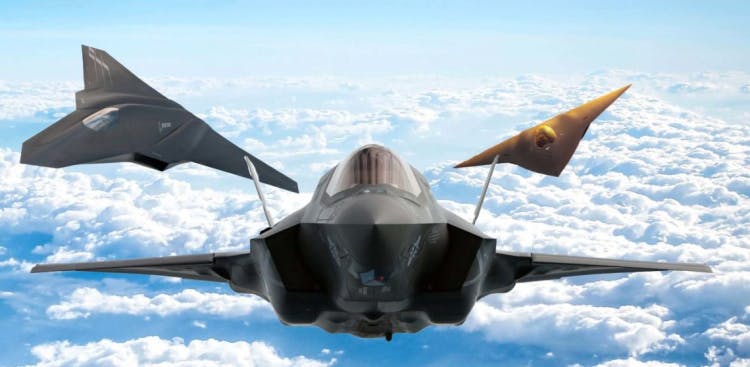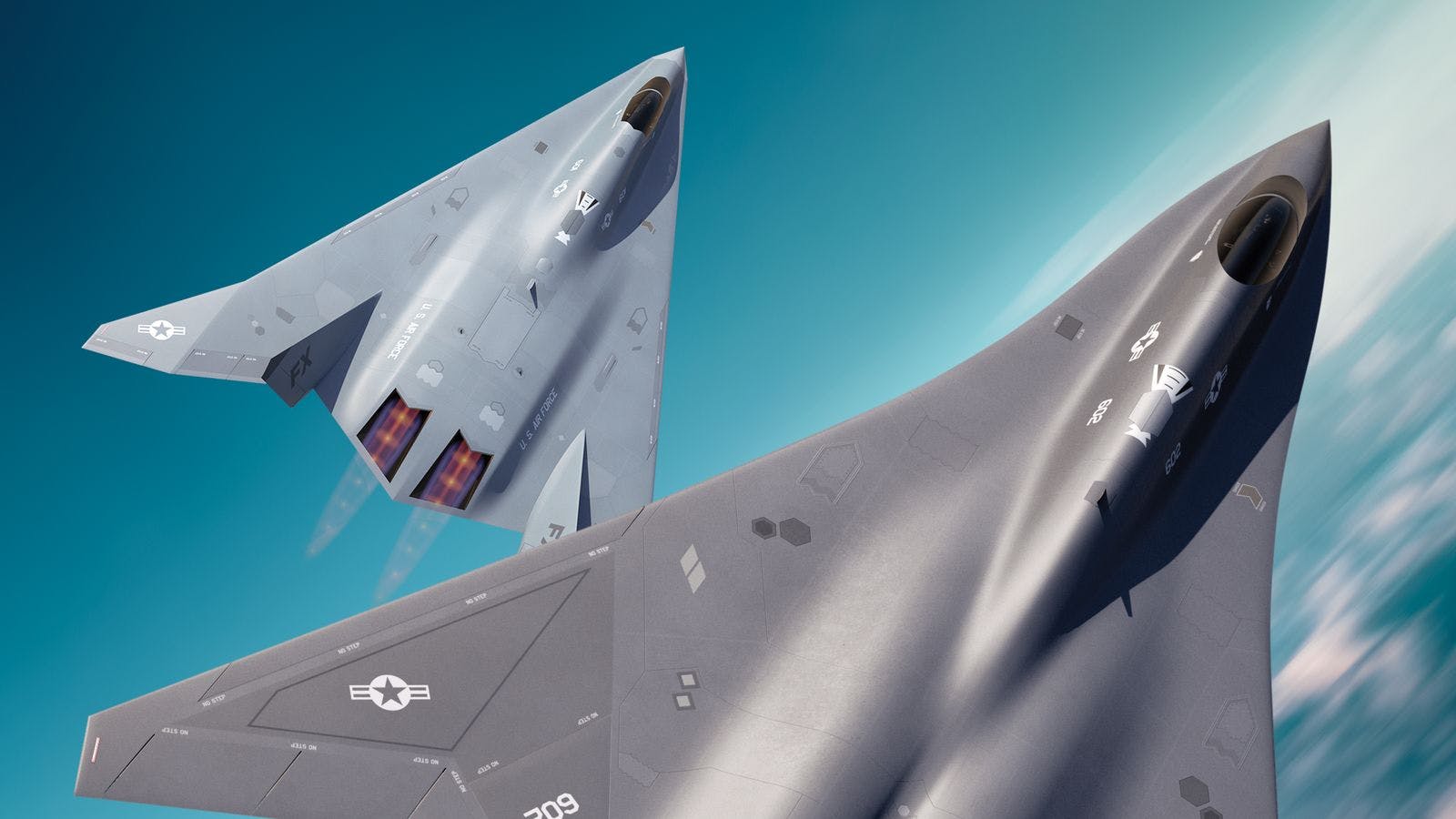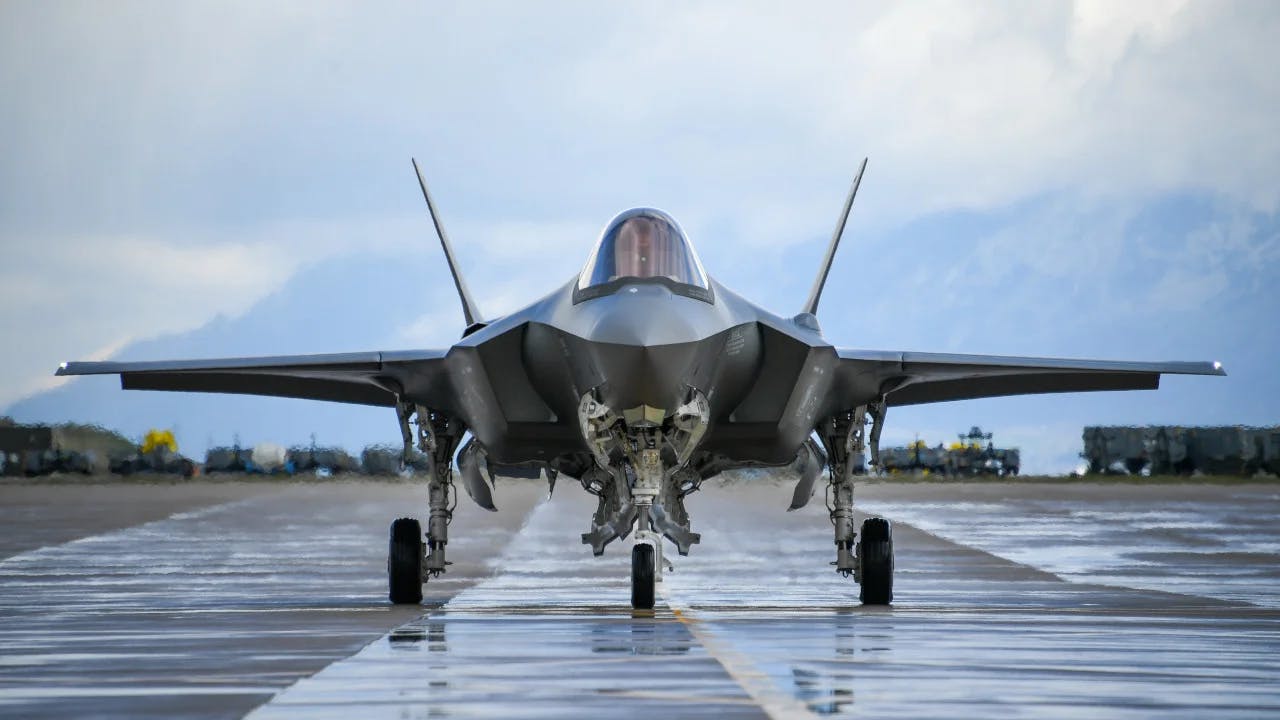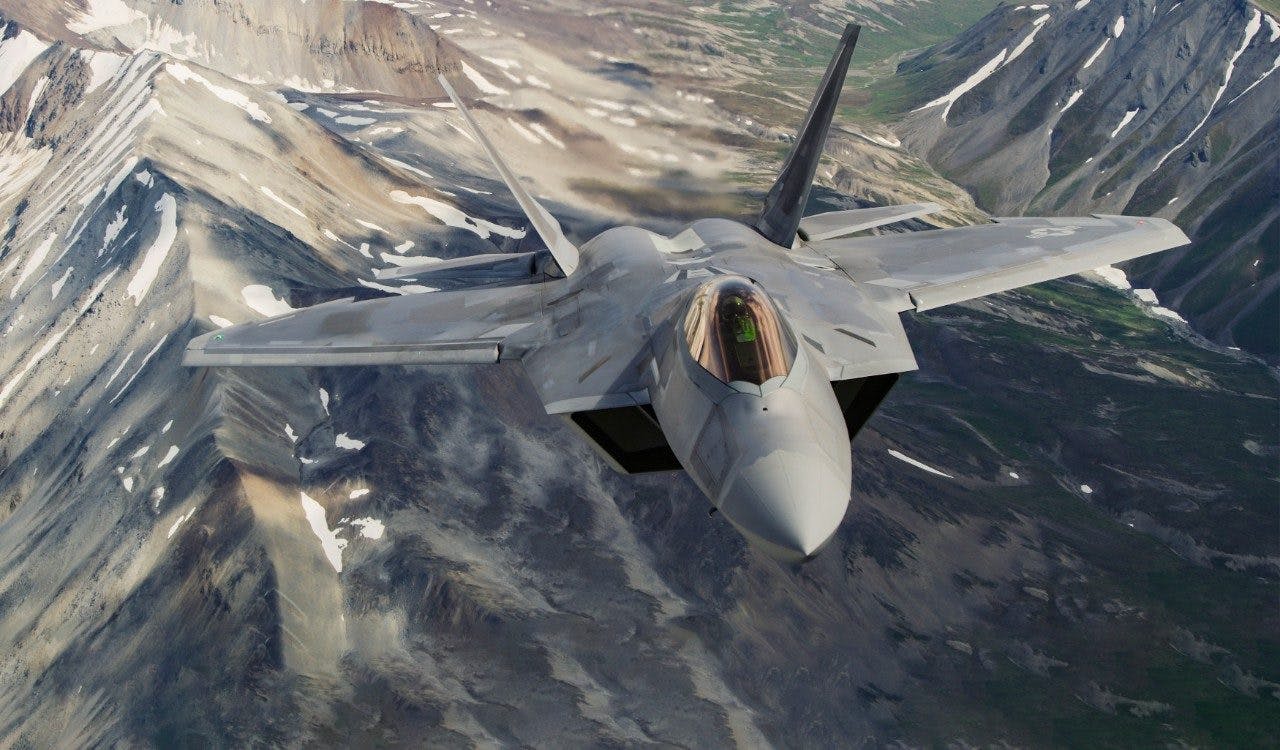Next-Generation Air Dominance: Everything we know about NGAD and the secret sixth-gen fighter program

Blog
Ever since the development of military aircraft capable of sinking battleships (around World War II), the world’s militaries began to realize that the real area of the battlefield that must be dominated was not the ground, nor the water, but the skies.
There were some holdouts that continued to advocate the construction and deployment of heavy battleships, but the more forward-thinking strategists grasped the then-revolutionary concept that the true potential of a modern navy would come to be realized and expressed through aviation.
Similarly, in combating against a land invasion, such as Germany’s blitzkrieg across Europe in WWII, an air force can provide such a dominating presence from above, even without a significant number of “boots on the ground,” that supplies and infrastructure can be so damaged as to reduce the enemy’s ground army to the point of ineffectiveness, to say nothing of the psychological impact to the populace.
In short, the military force that maintains air superiority can more easily dominate armor and ground forces, as well as ships and navies. For obvious reasons, the flagships that extend the US Navy’s might around the globe have transitioned from the battleships of WWI to the Yorktown-class carriers of WWII, and to the 100,000-ton Gerald R Ford class supercarriers of today.
However, technology—and associated technological threats—continues to advance, and any military that relies on “today’s most advanced fighter” will quickly find that tomorrow, that advanced fighter might be marginally effective or even obsolete.
The problem with any nation or organization operating at the forefront of aircraft development is the question of “where do we go from here?” It seems nearly incomprehensible that fighter-interceptor/advanced multi-role aircraft such as the F-22 Raptor and the F-35 Lightning II Joint Strike Fighter aren’t advanced enough to maintain air superiority.
Yet the F-22 is slated for retirement around 2030 (if not sooner) and the F-35 is in need of supplemental aircraft and systems to achieve the US Air Force’s objectives in the face of new technologies.
So, what’s next?

What is the NGAD Next-Generation Air Dominance program?
NGAD is the US Air Force’s sixth-generation fighter initiative. According to the Air Force, the Next-Generation Air Dominance (NGAD) program is intended to develop “a portfolio of technologies enabling air superiority.” The Air Force intends for NGAD to replace the F-22 fighter jet beginning around 2030, but that is not its only goal.
What this “portfolio of technologies” looks like, exactly, is still classified, but the Air Force hints at the NGAD possibly including a combination of crewed and uncrewed aircraft, along with other systems and sensors.

What’s the sixth-gen fighter? Is the NGAD’s goal to develop a new fighter aircraft?
A Congressional Research Service report from June 2022 states, “While one stated goal of the NGAD program is to replace the F-22 fighter jet, the aircraft that come out of the NGAD program may or may not look like a traditional fighter. The Air Force is developing technologies involved in NGAD to provide air dominance. Part of the program’s goal is to determine how to achieve that end, independent of traditional U.S. military approaches to air dominance. NGAD could take the form of a single aircraft and/or a number of complementary systems—manned, unmanned, optionally manned, cyber, electronic—forms that would not resemble the traditional ‘fighter.’”
Part of the NGAD “portfolio” might include a larger aircraft the size of a B-21, which of course wouldn’t be able to maneuver like a fighter. However, a large aircraft may be capable of carrying multiple advanced weapons and countermeasure systems such as the Next-Gen Jammer (NGJ) and/or the Airborne High Energy Laser (AHEL), which might effectively neutralize multiple airborne and ground-based threats and dominate a large amount of airspace, helping to ensure the goal of air dominance.
So, while the assumption is that, at least in part, the NGAD will result in an aircraft that can suitably replace the F-22, that may not necessarily mean that this aircraft is one that a pilot sits in and that dogfights kinetically, trying to outmaneuver another plane. And with the “portfolio” approach, there’s no rule that says that all applicable sensors and weapons even have to be on the same aircraft.
According to a US Naval Institute report, on September 15, 2020, then-USAF acquisition executive Dr. Will Roper announced that the Air Force had flown a “full-scale flight demonstrator” as part of the NGAD program. Secretary of the Air Force Frank Kendall announced on June 1, 2022 that NGAD program technologies have matured enough to allow the program to move to the engineering, manufacture, and design phase of development.
Air Force Magazine reported in April 2022 that “While still highly classified, the Air Force has gradually begun to reveal limited details about NGAD, which it describes as a ‘family of systems’ that will collaboratively gain air dominance in combat. The NGAD family will include at least one crewed aircraft and an undisclosed number of uncrewed aircraft, along with other technologies that could include optionally crewed platforms, missiles, pods, and offboard capabilities, some of which could operate from space. Some flying escorts will carry sensors or more weapons, while others will provide electronic or ground attack capabilities so that NGAD can get through enemy defenses to hold at risk any target in the battlespace.”
So it appears that, at least in part, there will be at least one (crewed or uncrewed) “fighter-like” aircraft resulting from NGAD.

What is the program timeline for NGAD and the sixth-gen fighter?
According to a Breaking Defense article from July 2022, Air Force Secretary Frank Kendall said the down select process to pick a manufacturer is “not all that far away.” This jibes with information Intergalactic recently ascertained from a consultant analyzing the FY23 Department of Defense budget that NGAD is “much further along than most people think.”
What is the budget for the NGAD program?
NGAD began as a Defense Advanced Research Projects Agency project. Since 2015, Congress has appropriated approximately $4.2 billion for NGAD.
According to the CRS report, the Air Force’s planned NGAD Research, Development, Test, and Evaluation Funding sits at about $1.65B/year in FY2022 and ramps up to around $3.5B/yearly by FY2027.
Per the report, “The Air Force requested $1.66 billion on NGAD for FY2023, and projects spending an additional $11.7 billion between FY2024 and FY2027. This would represent a three times increase in funding compared to what was appropriated from FY2015 through FY2022.”
As far as unit costs, since the nature and design of “the NGAD aircraft” is still not completely nailed down (as far as configuration, size, weapons systems, crewed/uncrewed, etc.) it’s difficult to really define what “the NGAD aircraft” will be. Indeed, it may be more helpful to think of it the way the Air Force described it, as a “portfolio” of aircraft or a “family of systems.” However, Secretary Kendall managed expectations when he stated at the House Armed Services Air Force FY2022 Air Force Posture hearing that NGAD would cost “multiple hundreds of millions” of dollars per aircraft.
That’s a fair chunk of change by any standards, and makes the F22’s eye-watering price of $125-$191 million per copy (depending on whom you ask) seem like a bargain. However, the Air Force deems the NGAD as a prerogative to continue to “enable air superiority,” which since WWII, American citizens, military leaders, and lawmakers recognize the value of.
–By Jeff Davis, Intergalactic Scribe
Sources
https://sgp.fas.org/crs/weapons/IF11659.pdf
https://www.airforcemag.com/article/piecing-together-the-ngad-puzzle/